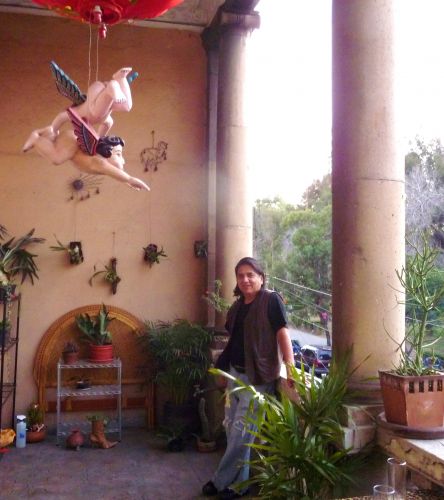The gazebo in this photo was Mexico's contribution to the 1884 World's Fair, held in New Orleans. Given its Moorish design, it was known as the "Mexican Alhambra Palace." After the fair, the cast-iron structure was disassembled, brought back to Mexico City in pieces, and rebuilt in the Alameda Central. From its perch lottery winners were announced. Around 1910, it was replaced by the Monument to Benito Juárez (now on Avenida Juárez) and moved to the Alameda of a neighborhood called Santa María la Ribera.
Santa María la Ribera is one of my favorite areas of the city. It has had a bad rep since the 1840s, when a citizen council complained to federal authorities of thugs who roamed the area. Today, it's a traditional neighborhood, full of cantinas, modest restaurants and snack shops, that is in the process of gentrification. You can tell it's on the rise due to the proliferation of internet cafes, gyms, coffee houses and other businesses that tend to be patronized by the middle class. My friend Jesús Chairez (who has several blogs and websites about Mexico City) lucked out when he found an incredible apartment with this balcony that overlooks the Alameda. Everyone's luck runs out, though. He says his landlady is selling the building.






